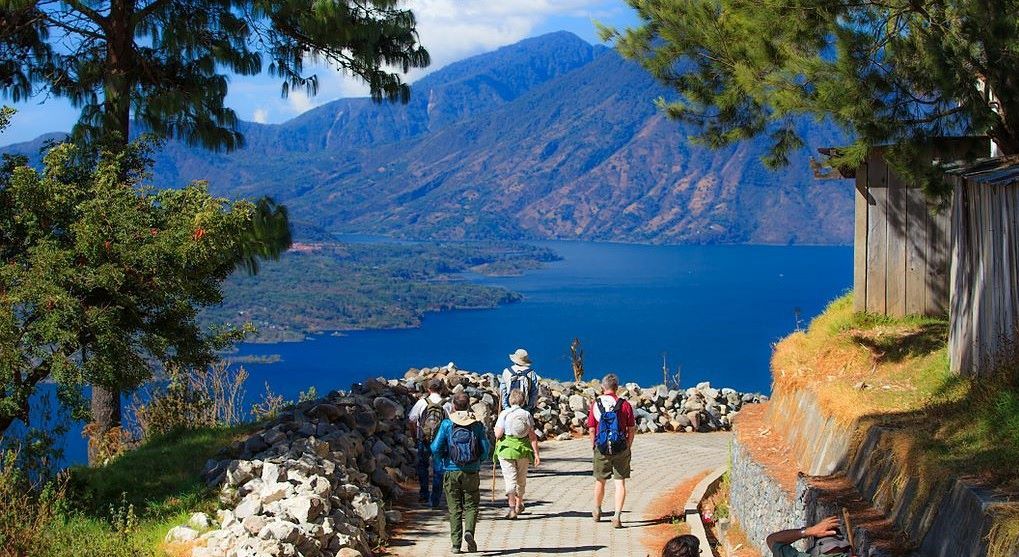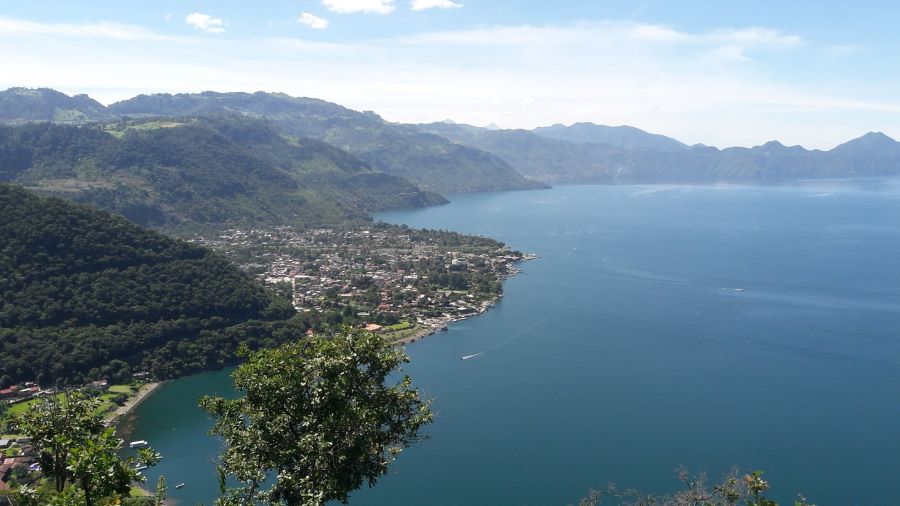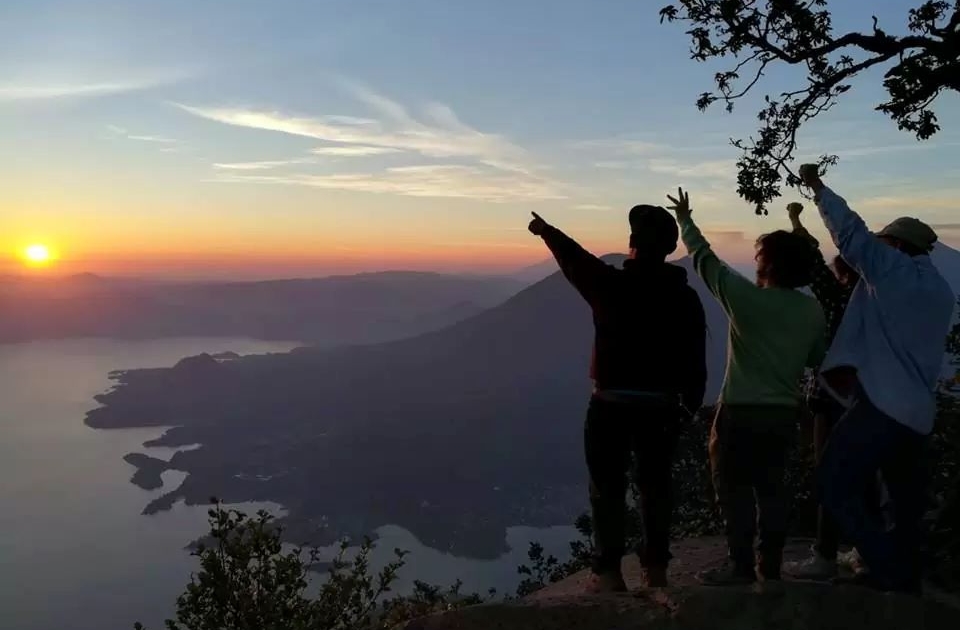Villages of Lake Atitlán, Guatemala: Cultural History, Accommodations, and Boat Transport
Introduction
Lake Atitlán, located in the Guatemalan highlands, is surrounded by a collection of fascinating Mayan villages, each offering a unique blend of cultural heritage, artistic traditions, and stunning landscapes. This guide explores the cultural history of the major villages around Lake Atitlán, provides accommodation recommendations, and offers practical boat transport times between these villages.
1. Panajachel (Pana)
Cultural History
- Significance: Known as the gateway to Lake Atitlán, Panajachel is the lake’s most developed town and a major transportation hub. Historically, it was an important market town for the Kaqchikel Maya, and during the 20th century, it became a popular destination for expatriates and travelers, leading to its current touristic character.
- Culture: Panajachel offers a blend of indigenous traditions and international influences. The local markets are rich in traditional handicrafts, and many residents still wear traditional Mayan clothing, especially during local festivals.
Accommodations
- Budget: Hospedaje El Viajero – Simple yet comfortable with lake views.
- Mid-range: Hotel Atitlán – Surrounded by a botanical garden, offering stunning views.
- Luxury: Casa Palopó – An upscale boutique hotel known for its elegance and prime location above the lake.
Boat Transport Times
- Panajachel to San Pedro: 30 minutes
- Panajachel to San Juan: 25 minutes
- Panajachel to Santa Catarina Palopó: 10 minutes
2. San Pedro La Laguna
Cultural History
- Significance: San Pedro La Laguna is one of the most popular villages for backpackers and budget travelers. It has historically been a Tz’utujil Maya village, and despite the influx of tourism, the indigenous community has managed to preserve much of its language and cultural practices.
- Culture: The village has a strong Tz’utujil Maya presence, with numerous artisans, weavers, and local traditions on display. It is also a popular destination for Spanish language learners and offers a thriving café and bar scene catering to travelers.
Accommodations
- Budget: Hotel Mikaso – Lakeside hostel offering dorms and private rooms with a communal vibe.
- Mid-range: Casa Lobo – A small guesthouse with charming décor and a central location.
- Luxury: Sababa Resort – A beautiful resort with a pool, modern amenities, and stunning views of the lake.
Boat Transport Times
- San Pedro to Panajachel: 30 minutes
- San Pedro to San Juan: 10 minutes
- San Pedro to Santiago Atitlán: 20 minutes
3. San Juan La Laguna
Cultural History
- Significance: San Juan La Laguna is known for its strong dedication to preserving Mayan traditions, particularly in the areas of art and textiles. The village is home to several cooperatives of women weavers and painters, who use natural dyes and traditional techniques in their work.
- Culture: San Juan La Laguna is more peaceful than neighboring San Pedro and is widely regarded for its efforts to maintain local culture. Visitors can engage with the weavers’ cooperatives, explore local art galleries, and even learn about medicinal plants used by the community.
Accommodations
- Budget: Eco-Hotel Mayachik – A sustainable, eco-friendly hotel with rustic yet comfortable accommodations.
- Mid-range: Posada Mana – A lovely guesthouse featuring local art and a friendly atmosphere.
- Luxury: El Paredon de Tz’unun Ya – A boutique hotel offering panoramic views of the lake and elegant rooms.
Boat Transport Times
- San Juan to Panajachel: 25 minutes
- San Juan to San Pedro: 10 minutes
- San Juan to Santiago Atitlán: 15 minutes
4. Santiago Atitlán
Cultural History
- Significance: Santiago Atitlán is the largest village on the lake and has a rich history dating back centuries. It is a major center for the Tz’utujil Maya and is home to Maximón, a revered Mayan deity whose effigy is visited by locals and tourists alike.
- Culture: Santiago is one of the best places to witness traditional Mayan life, including intricate textiles, religious ceremonies, and vibrant markets. The village played an important role during Guatemala’s civil war, and visitors can still learn about its history of resistance and activism.
Accommodations
- Budget: Posada de Santiago – A cozy inn with lakeside views and a focus on traditional architecture.
- Mid-range: Hotel Tiosh Abaj – A peaceful retreat with Mayan-style architecture and excellent access to cultural landmarks.
- Luxury: Eco Hotel Uxlabil – A charming eco-friendly hotel offering lakeside views and a focus on sustainable tourism.
Boat Transport Times
- Santiago to Panajachel: 45 minutes
- Santiago to San Pedro: 20 minutes
- Santiago to San Juan: 15 minutes
5. Santa Catarina Palopó
Cultural History
- Significance: Santa Catarina Palopó is a small, colorful village located just a few kilometers from Panajachel. It is well-known for its initiative to paint the village’s homes in vibrant colors and patterns inspired by traditional Mayan textiles. This art project has not only beautified the town but has also brought attention to the rich cultural heritage of the Kaqchikel Maya who live here.
- Culture: The village offers an authentic glimpse into the daily lives of the Kaqchikel Maya. Weaving is an important part of local life, and visitors can see traditional techniques in action. The village’s painted homes have also made it an Instagram hotspot.
Accommodations
- Budget: Hotel Casa del Mundo – An affordable hotel perched on the cliffs with fantastic views of the lake.
- Mid-range: Villa Santa Catarina – A charming hotel with an outdoor pool and easy access to local weaving cooperatives.
- Luxury: Tzampoc Resort – A luxurious hotel offering panoramic lake views, infinity pools, and elegant rooms.
Boat Transport Times
- Santa Catarina to Panajachel: 10 minutes
- Santa Catarina to San Pedro: 35 minutes
- Santa Catarina to San Antonio Palopó: 15 minutes
6. San Antonio Palopó
Cultural History
- Significance: San Antonio Palopó is one of the most traditional villages around the lake, with a strong Kaqchikel Maya population. The town is famous for its distinctive style of pottery and weaving, and visitors can observe local artisans at work or purchase unique handmade ceramics.
- Culture: San Antonio offers a slower pace and a more traditional atmosphere than some of the more touristic villages. The women of the village are often seen wearing traditional blue and white huipiles (Mayan blouses), and weaving remains an important cultural practice.
Accommodations
- Budget: Hotel Nuestro Sueño – A quaint hotel with basic amenities and lake views.
- Mid-range: Casa de la Abuela – A charming, locally owned guesthouse with comfortable rooms.
- Luxury: Atitlan Villas – A luxury villa complex offering private suites, pools, and incredible lake views.
Boat Transport Times
- San Antonio to Panajachel: 20 minutes
- San Antonio to Santa Catarina: 15 minutes
- San Antonio to San Pedro: 40 minutes
7. San Lucas Tolimán
Cultural History
- Significance: Located on the southern shore of Lake Atitlán, San Lucas Tolimán is one of the least touristy villages on the lake. It has a strong connection to agriculture, particularly coffee production, and visitors can tour local coffee farms to learn about the process.
- Culture: San Lucas Tolimán is a quiet town that offers a more authentic, off-the-beaten-path experience. The village is home to numerous religious and cultural festivals, including celebrations of patron saints and local Mayan traditions.
Accommodations
- Budget: Hotel Tolimán – A simple yet charming hotel with an organic garden and a restaurant serving farm-to-table meals.
- Mid-range: Palacio de Doña Leonor – A well-reviewed guesthouse with lake views and an emphasis on local cuisine.
- Luxury: Casa del Mundo – An upscale option with an infinity pool, terraces, and beautifully appointed rooms.
Boat Transport Times
- San Lucas Tolimán to Panajachel: 50 minutes
- San Lucas Tolimán to Santiago Atitlán: 30 minutes
- San Lucas Tolimán to San Pedro: 40 minutes
Boat Transportation Overview
Boats (lanchas) are the primary mode of transportation between the villages on Lake Atitlán. They run regularly between the main villages, with prices ranging from $1 to $5 USD depending on the route. Below are general travel times between key locations:
| Route | Approximate Time |
|---|---|
| Panajachel → San Pedro | 30 minutes |
| Panajachel → San Juan | 25 minutes |
| Panajachel → Santa Catarina Palopó | 10 minutes |
| San Pedro → Santiago Atitlán | 20 minutes |
| Santiago → San Juan | 15 minutes |
| San Antonio → Panajachel | 20 minutes |
Conclusion
Lake Atitlán’s villages offer a unique combination of natural beauty and rich cultural heritage. From the colorful streets of Santa Catarina Palopó to the traditional crafts of San Antonio Palopó and the spiritual depth of Santiago Atitlán, each village brings something distinct to the traveler’s experience. Whether you’re looking for adventure, relaxation, or cultural immersion, Lake Atitlán’s diverse villages provide a perfect setting for exploration.



